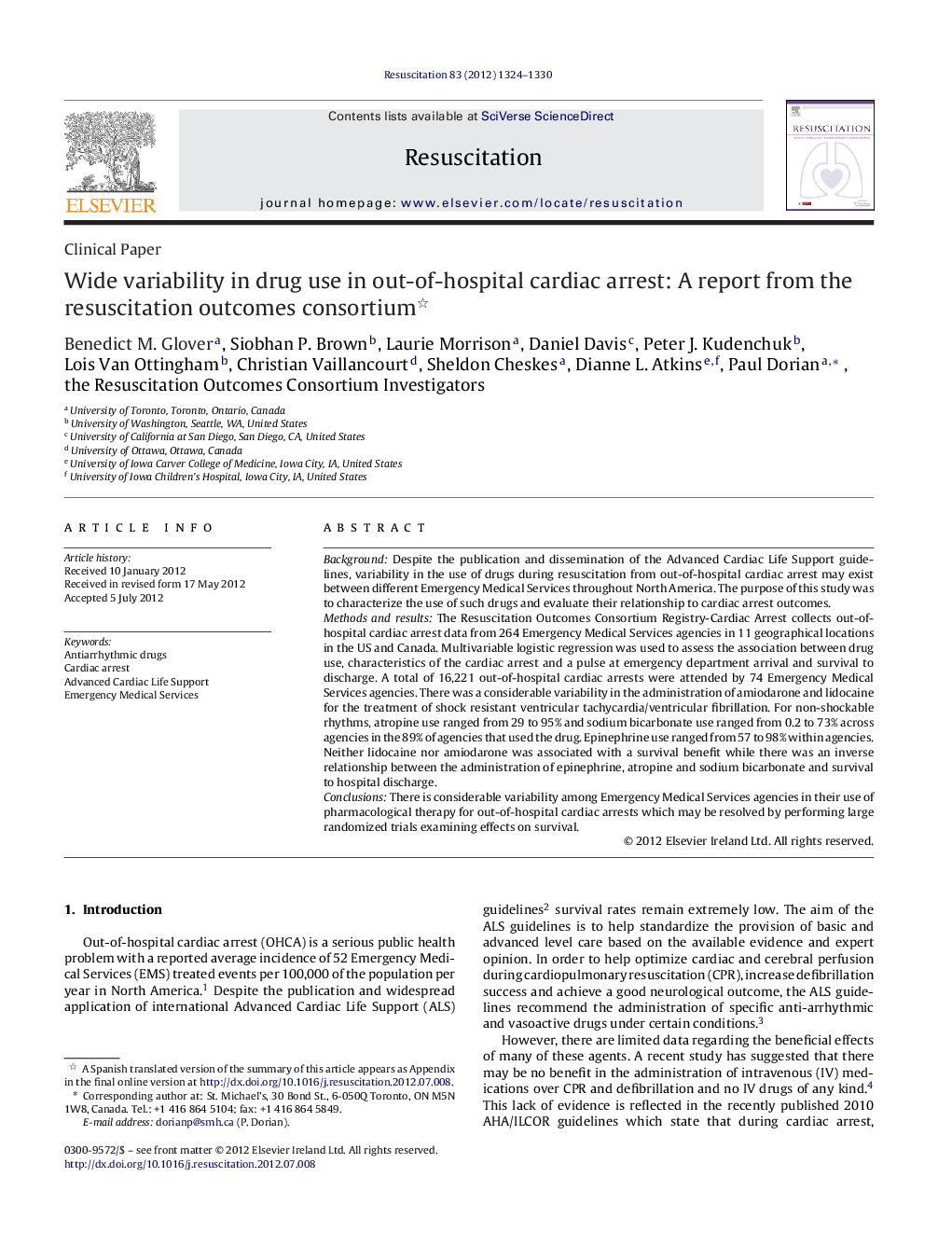| Article ID | Journal | Published Year | Pages | File Type |
|---|---|---|---|---|
| 5999060 | Resuscitation | 2012 | 7 Pages |
BackgroundDespite the publication and dissemination of the Advanced Cardiac Life Support guidelines, variability in the use of drugs during resuscitation from out-of-hospital cardiac arrest may exist between different Emergency Medical Services throughout North America. The purpose of this study was to characterize the use of such drugs and evaluate their relationship to cardiac arrest outcomes.Methods and resultsThe Resuscitation Outcomes Consortium Registry-Cardiac Arrest collects out-of-hospital cardiac arrest data from 264 Emergency Medical Services agencies in 11 geographical locations in the US and Canada. Multivariable logistic regression was used to assess the association between drug use, characteristics of the cardiac arrest and a pulse at emergency department arrival and survival to discharge. A total of 16,221 out-of-hospital cardiac arrests were attended by 74 Emergency Medical Services agencies. There was a considerable variability in the administration of amiodarone and lidocaine for the treatment of shock resistant ventricular tachycardia/ventricular fibrillation. For non-shockable rhythms, atropine use ranged from 29 to 95% and sodium bicarbonate use ranged from 0.2 to 73% across agencies in the 89% of agencies that used the drug. Epinephrine use ranged from 57 to 98% within agencies. Neither lidocaine nor amiodarone was associated with a survival benefit while there was an inverse relationship between the administration of epinephrine, atropine and sodium bicarbonate and survival to hospital discharge.ConclusionsThere is considerable variability among Emergency Medical Services agencies in their use of pharmacological therapy for out-of-hospital cardiac arrests which may be resolved by performing large randomized trials examining effects on survival.
